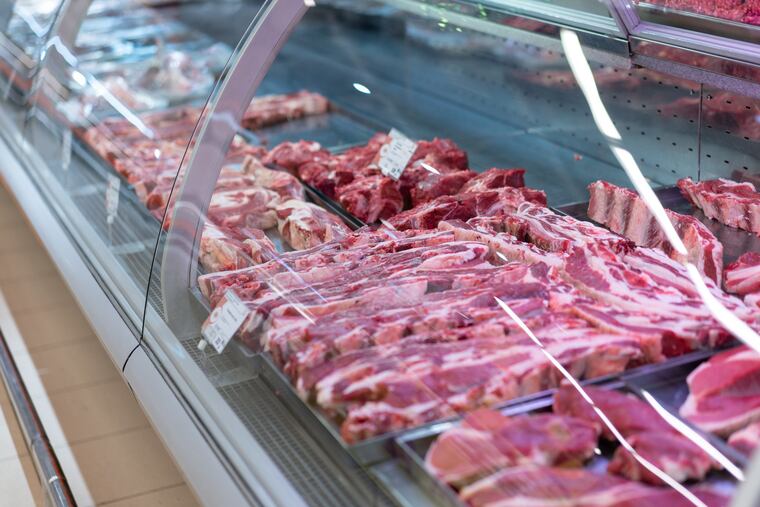Moody’s Analytics’ Zandi: Inflation should ease by next year, but plan for a bumpy ride
So far, the price increases aren’t overly surprising. But the risk in the next several years is that inflation will be higher than anticipated.

If it isn’t one thing, it’s another. For more than a year, we have been struggling with the pandemic and its economic carnage, including millions of lost jobs and high unemployment. Now that the pandemic is winding down, another economic problem has quickly come to the fore: uncomfortably high inflation.
It’s not just gasoline prices, now more than $3 a gallon. Prices are jumping for a wide range of goods and services, including new or used cars, airplane tickets, hotel rooms, rental cars, household appliances, furniture, dog food, and even diapers.
So far, the price increases aren’t overly surprising, at least in the aggregate. This is what typically happens in the wake of a recession. It happened after the Great Recession a decade ago. Demand picks up coming out of economic downturns, but it takes time for supply to catch up. Getting mothballed factories, mines, hotels, and global supply chains back up and running takes some doing, especially for businesses unsure of the staying power of the new, stronger demand.
To be sure, the lag between demand and supply is likely to be longer and the price spikes more dramatic and more persistent coming out of the pandemic. Lockdowns to contain the virus meant the lights went out in many industries for extended periods, and global supply chains were badly scrambled. And with the pandemic still raging in much of the world, especially in emerging economies where many commodities are produced and supply chains end, sorting this all out will be difficult.
Also, labor shortages that are hampering businesses’ ability to get back in full swing are pushing up wages and prices. It seems incongruous that there are a record number of open jobs at the same time that unemployment remains so high and labor force participation so low. This is unprecedented. Early in past economic recoveries, high unemployment and low labor force participation meant businesses had no trouble finding workers at depressed wages.
The difference now has to do with the economy’s rapid reopening and surge in demand for workers in the hotel, restaurant, health care, educational services, recreational activities and personal services industries. Many of the now unemployed, who say they have permanently lost their jobs, likely worked in those industries before the pandemic — but at employers that failed. These people will get back to work, but it will take time. They need to find new employers who may well require changes in their hours, child-care needs, commutes, and even where they live. The supplemental unemployment insurance available to many of the unemployed is also allowing these job seekers to search for longer before taking a job.
Likewise, many who left the workforce during the pandemic are having difficulty arranging to come back in. Many parents of young children need to stay home until child-care centers reopen and schools are open for in-person learning. Others can’t work as they care for sick family members or friends or elderly parents who left nursing care facilities ravaged by the pandemic. Still others will remain cautious about returning to work until the pandemic is clearly over or employers ante up wages high enough to make them overcome their worries.
Having said all this, if history is any guide, the frictions making it difficult for supply to catch up with demand will be resolved in coming months. The price spikes will abate. Given how much money can be made at these higher prices, businesses will quickly figure out how to ramp up production and sort out their supply-chain issues. The labor shortages will also iron themselves out quickly — certainly by September, when schools reopen and the supplemental UI expires.
By this time next year, inflation should settle between 2% and 3% . That is higher than the sub-2% inflation that prevailed for much of the past quarter-century, but this would be a feature and not a bug as inflation has been uncomfortably low. Going forward, it will be just about right.
But if this makes the outlook for inflation sound cut and dried, far from it! The risk in the next several years is that inflation will be higher than anticipated. Behind this concern are prospects that the economy will continue to experience robust growth, given the boost from the reopening economy, massive government spending, and the unleashing of pent-up demand built up by those who sheltered in place and saved their money during the pandemic.
In such a scenario, the economy will blow far past full employment; wage growth will accelerate, outstripping productivity gains and pushing businesses to raise prices more quickly to maintain profitability; and with the strong economy, those price increases stick. The Federal Reserve ultimately responds by quickly pushing up interest rates. This scenario has happened many times in the past, and often ends in recession.
So, while my sanguine outlook for the economy and inflation should prevail, it is prudent to plan for the alternative.